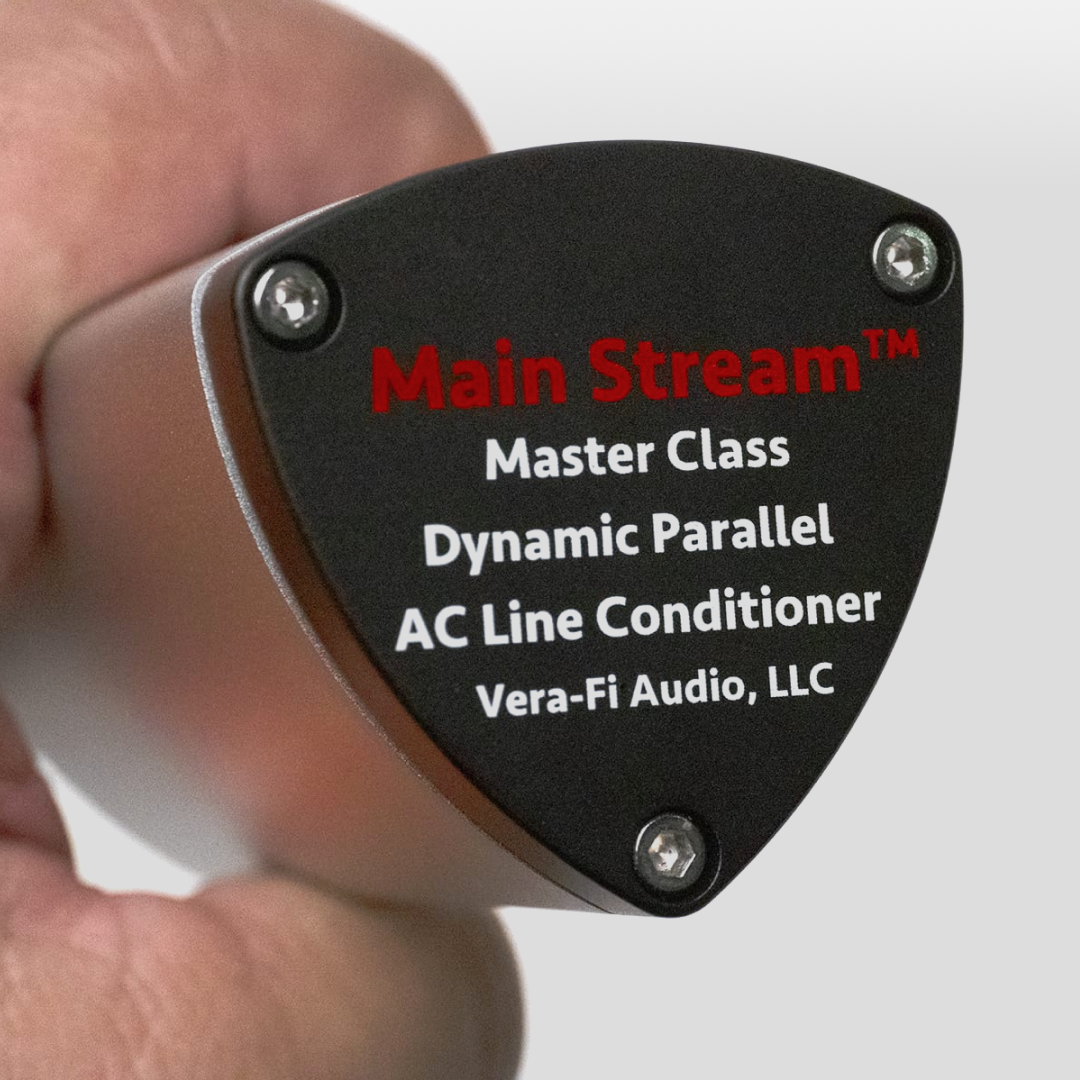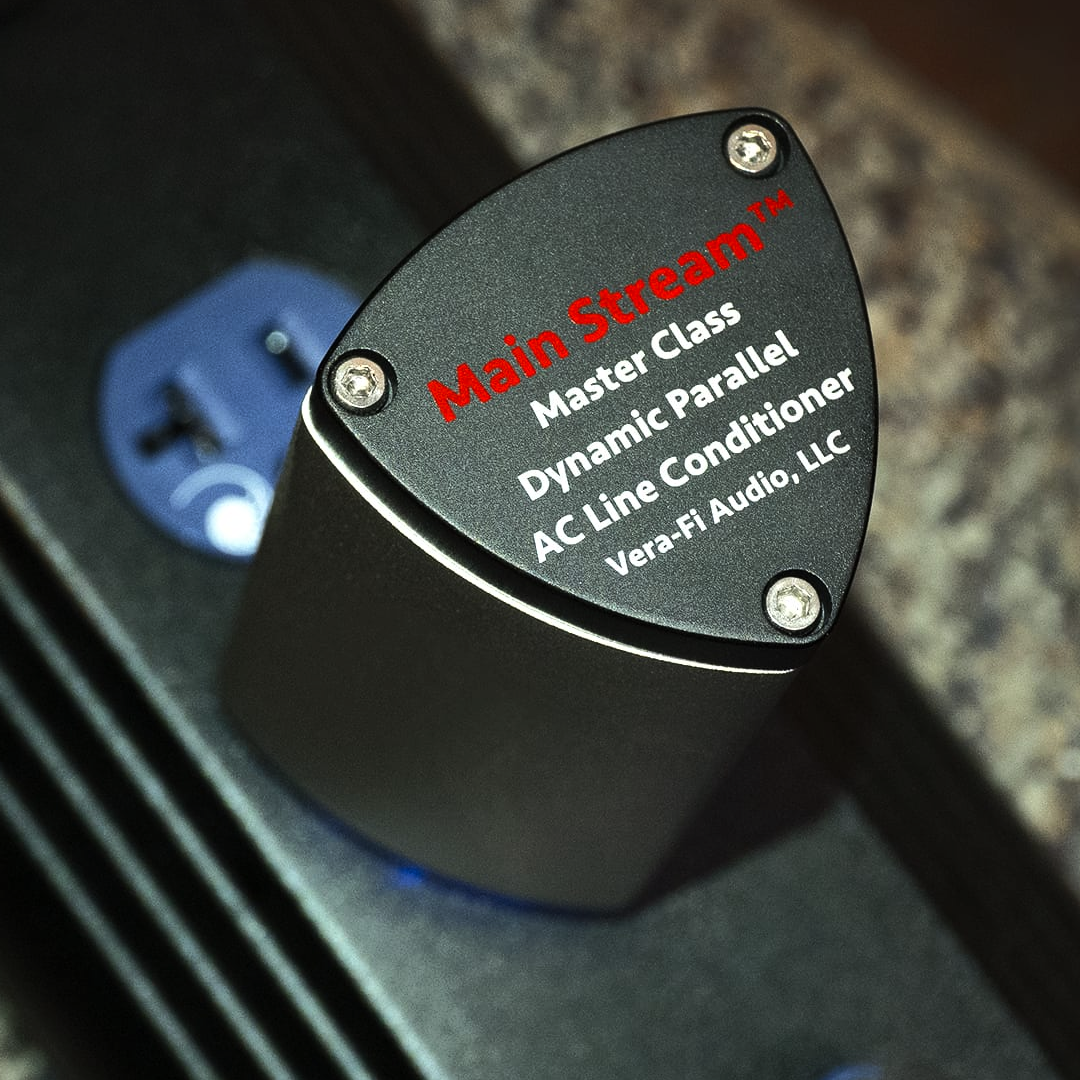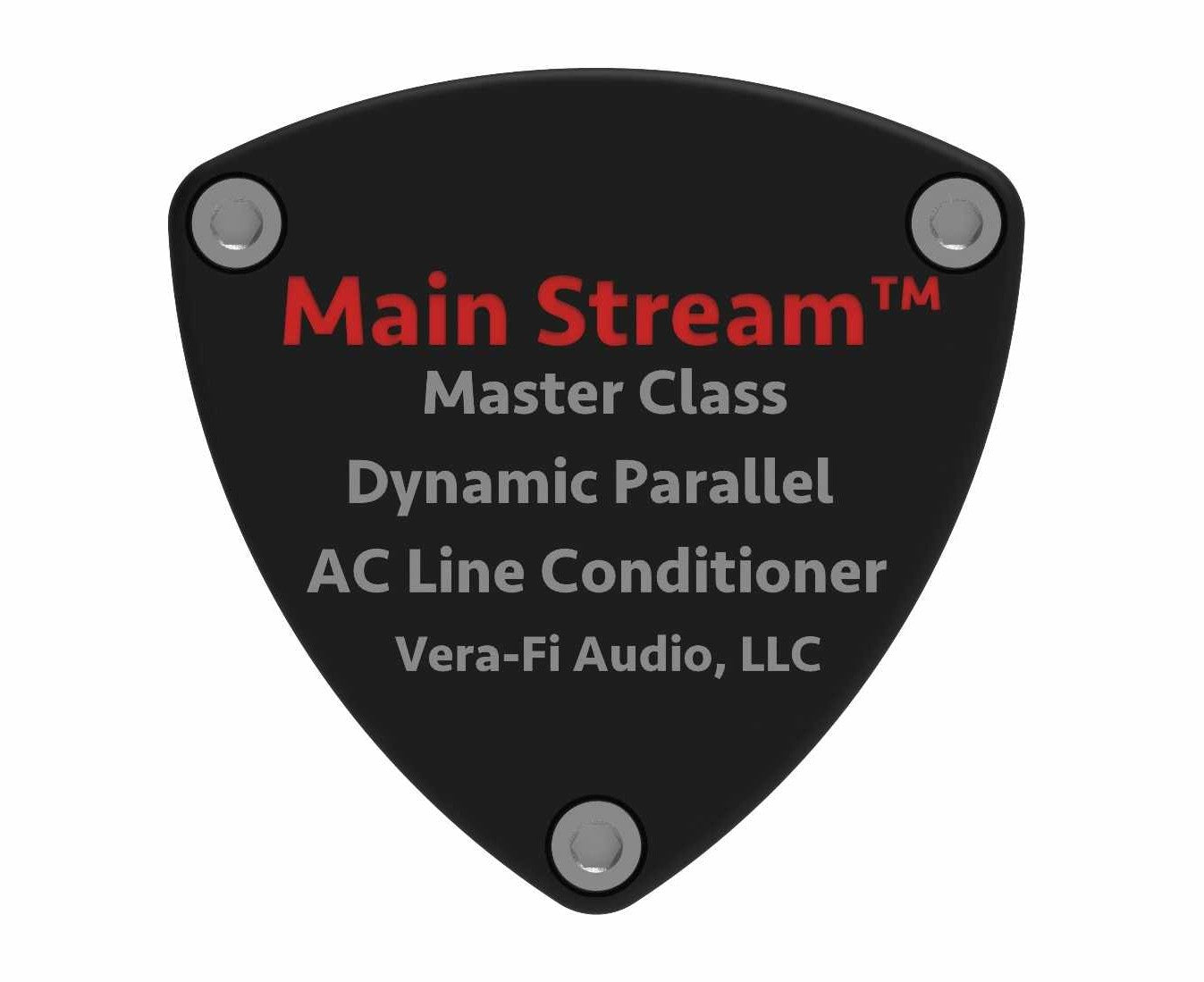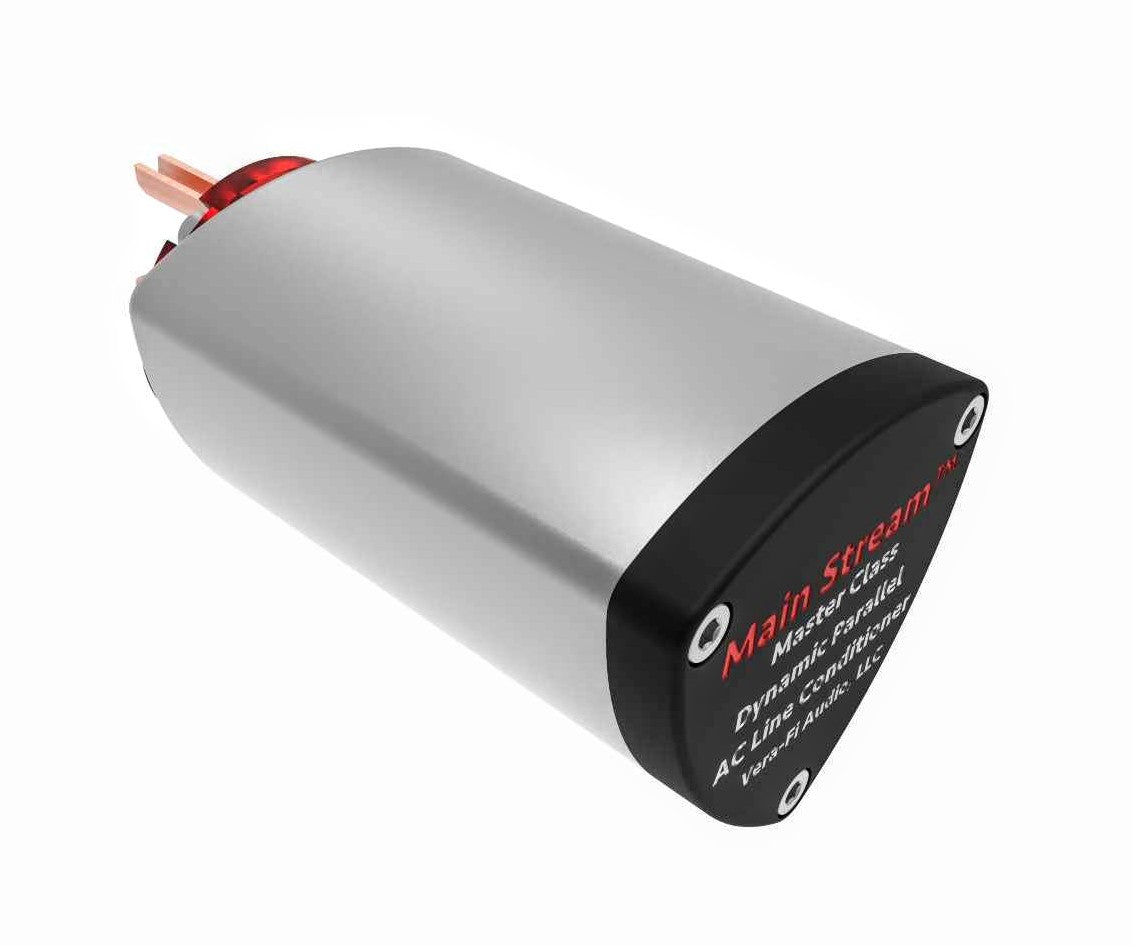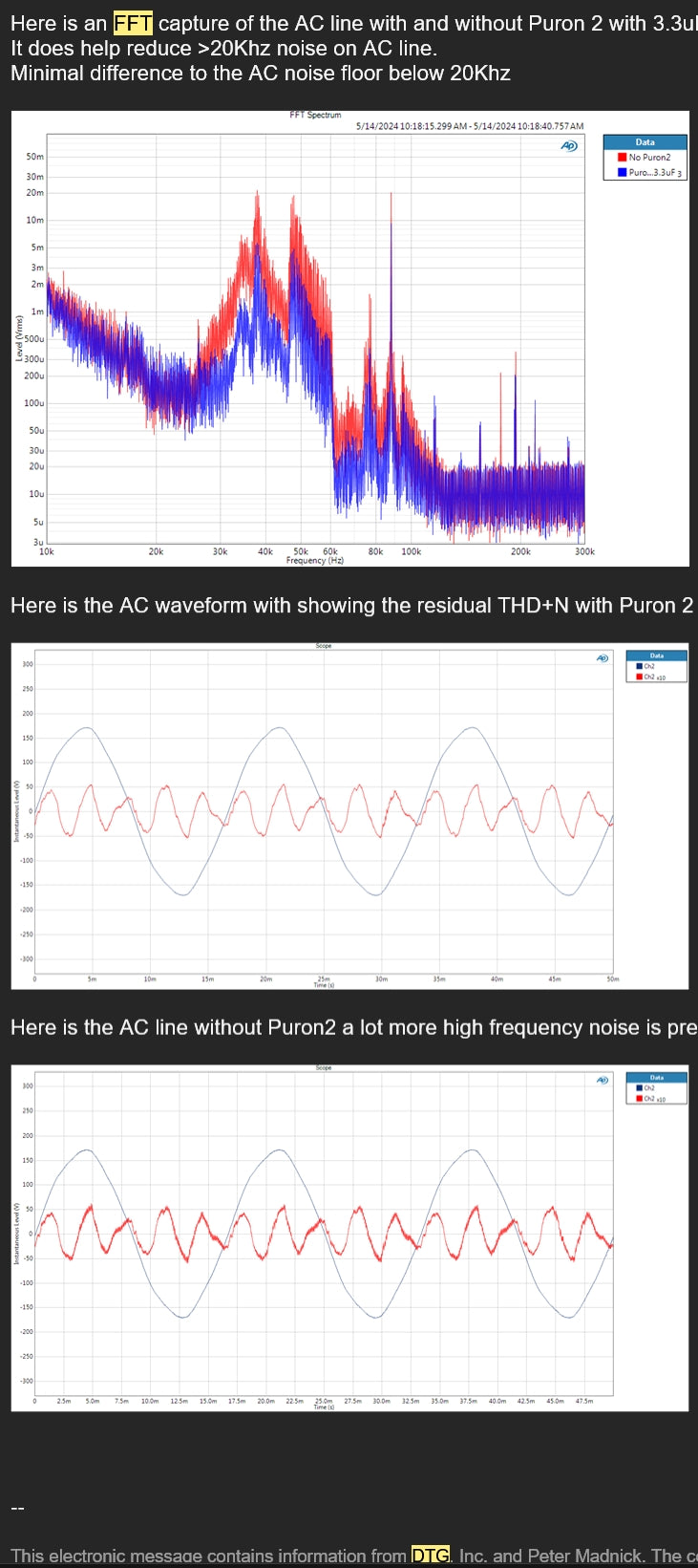Vera-Fi Audio LLC
Main Stream - Master Class Dynamic Parallel AC Line Conditioner
Main Stream - Master Class Dynamic Parallel AC Line Conditioner
Couldn't load pickup availability
Product Description
Product Description
Now Shipping!
Note: Shipping times for Main Stream can take 5 to 7 days.
Master Class Dynamic Parallel AC Line Conditioner
Main Stream is designed to improve the performance of your high-end audio or video system by reducing the amount of AC Mains-based interference travelling on the wires within your home. This interference is created not only by other components in the system, but also appliances and other electrical equipment elsewhere in the house. Sometimes even emanating from outside your home!
Of course, this interference is mostly in the RF range, but things like refrigerators, air conditioners and heaters, washers and dryers; anything with a big motor and put a pulse of energy onty your home AC line and it will be "felt" by other equipment within the home. The energy imposed on the line is absorbed or filtered in different ways, depending on the frequency band involved. Part of Mainstream's effectiveness is due to the multiple frequency bands it effects while utilizing a simple topology comprising a minimum number of parts.
Line interference can cause many undesirable effects; hum, hiss, hash, or buzzing sounds from your speakers, a slight vibration that can be felt through the chassis of your components or on the motor of your turntable, and on video displays as random lines, moving bars or fuzzy images.
These effects can be experienced individually or in combinations. It is interesting to note that oftentimes the effect (hum, for instance) is apparently reduced, but our bands of interest do not include these very low frequencies. We are reducing energy in a band that infers these types of noise reductions.
Main Stream is called a “parallel” line conditioner because you do not plug your component INTO it, but rather plug it into the Mains socket closest to the component. In this way the MainStream is never restricting the flow of current to your components, simply removing the interference it encounters on the line as the current flows by. And there is no limit to how many MainStreams you can use; a large system may best be served by several.
As you probably know, the other type of line conditioning is called "series". There are many (maybe most?) products out there which plug into the wall and then your component(s) plug into it. With these, the current must pass through the various filter parts on their way to your audio component, necessitating the internal parts being of both high enough voltage and current to support the power demands of the attached product(s). This makes these conditioners both larger and more expensive than a parallel type, and they are often designed to serve somewhat different needs, or sometimes one of just distribution and surge protection.
Mainstream uses a combination of reactive elements to create tuned filters designed to specifically reduce the levels of noise specifically known to interfere with your audio enjoyment. Our topology excludes the use of any type of resonant transformer as a wave shaping device, and rather only removes unwanted frequencies.
• Capable of reducing system background noise to vanishingly low levels.
• Reasonably priced,
• Milled extruded aluminum case
• Designed for a long life of continuous service
• A faint blue glow shows it is working
• Laboratory tests prove the effectiveness of MainStream via Fast Fourier Transform graphs
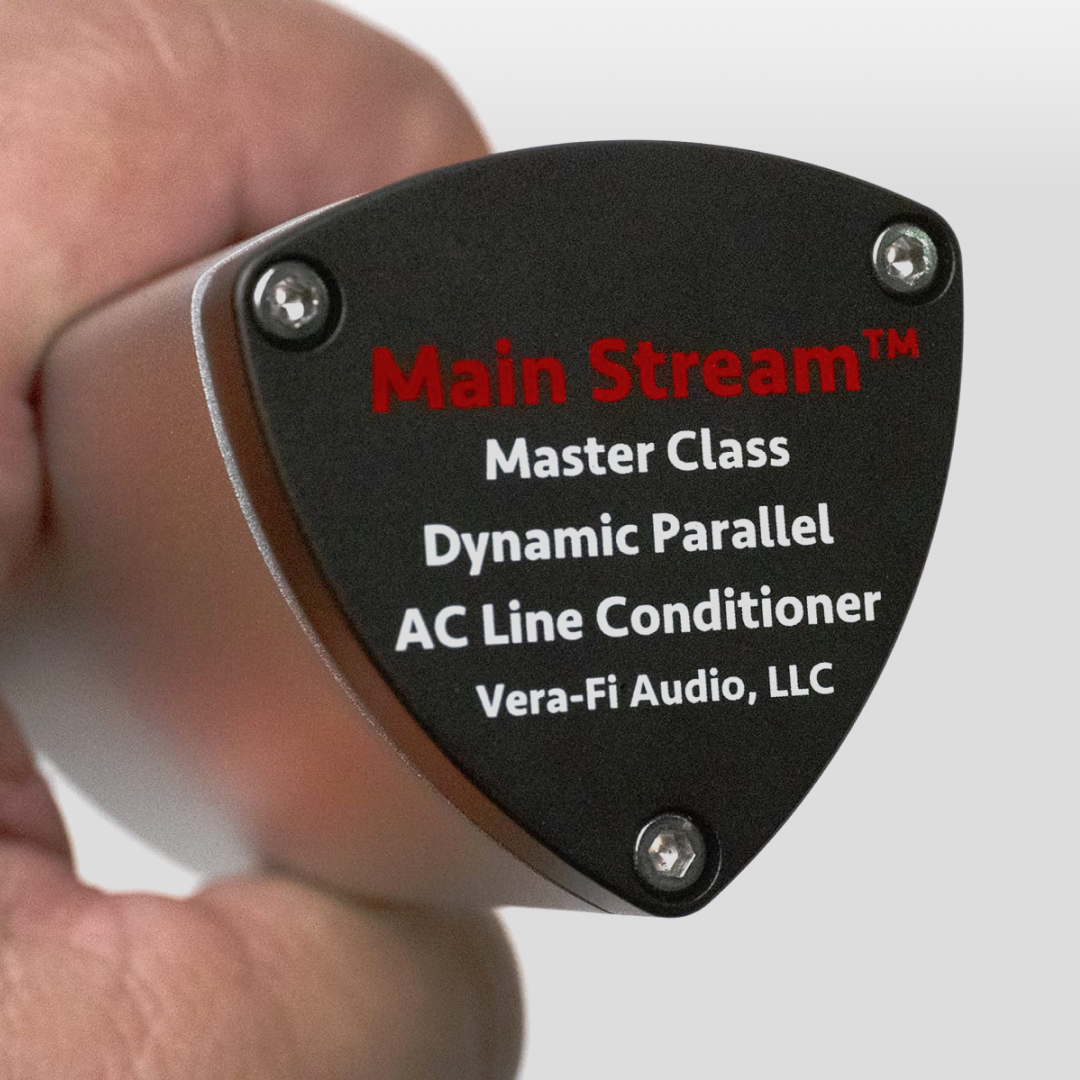
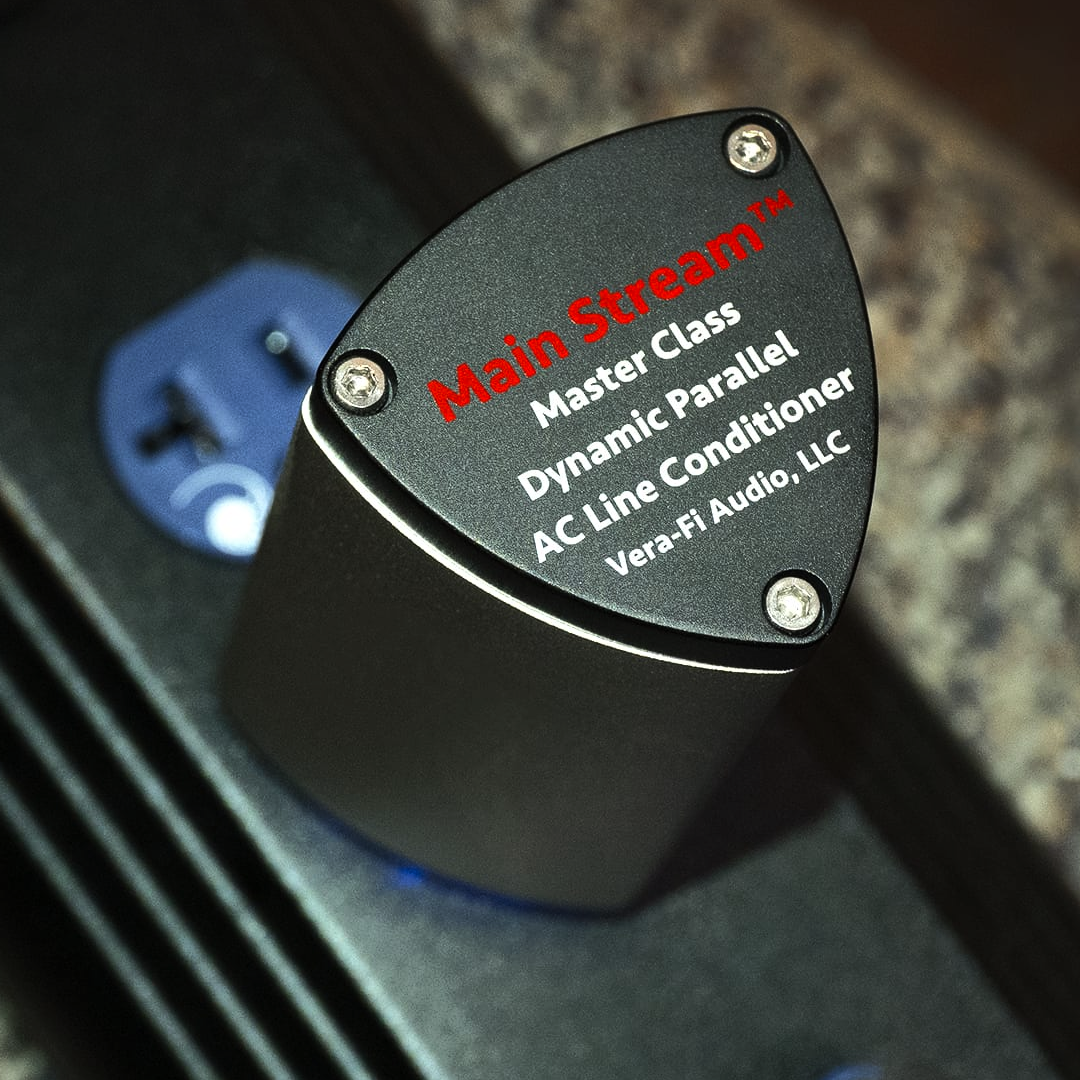
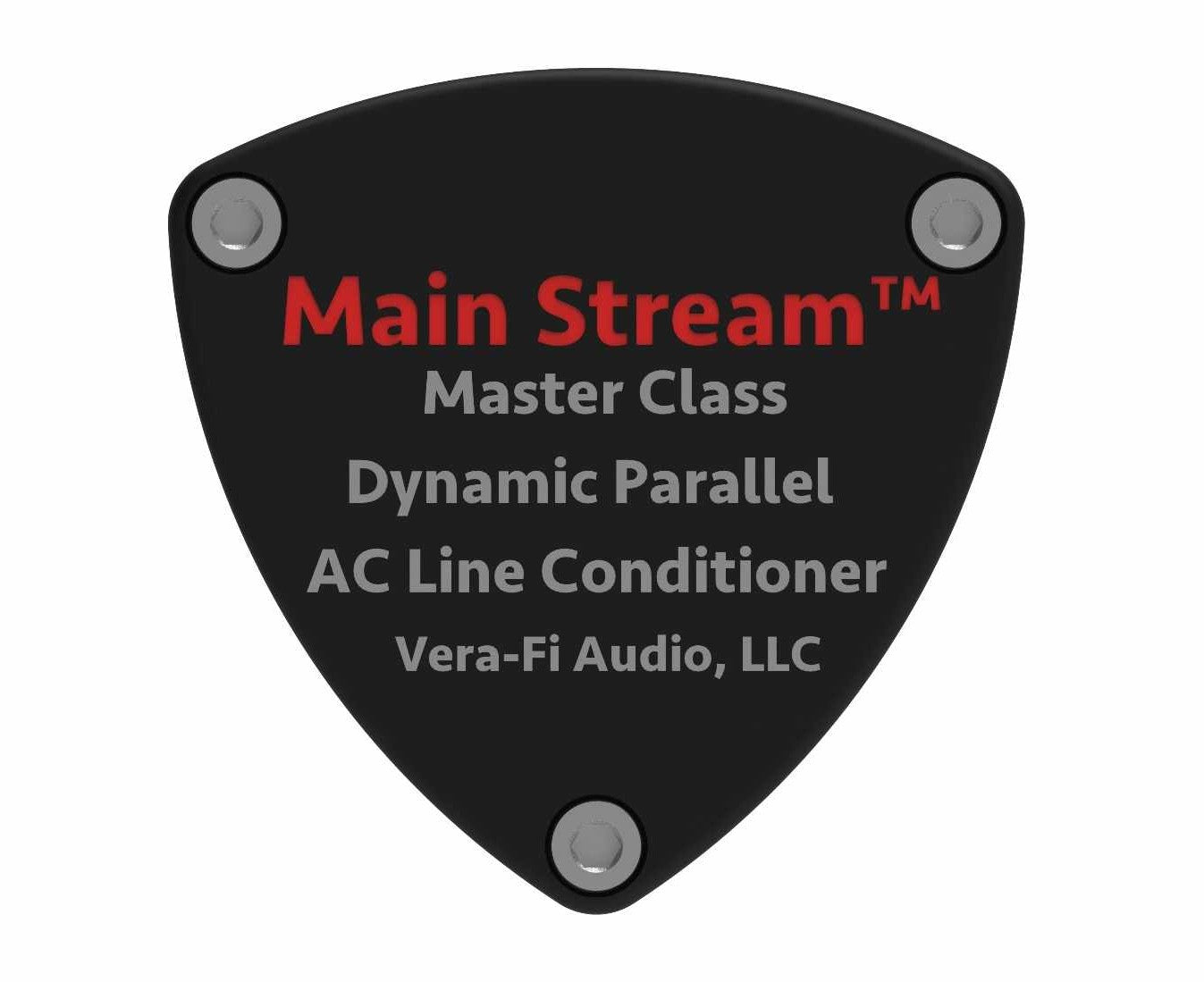
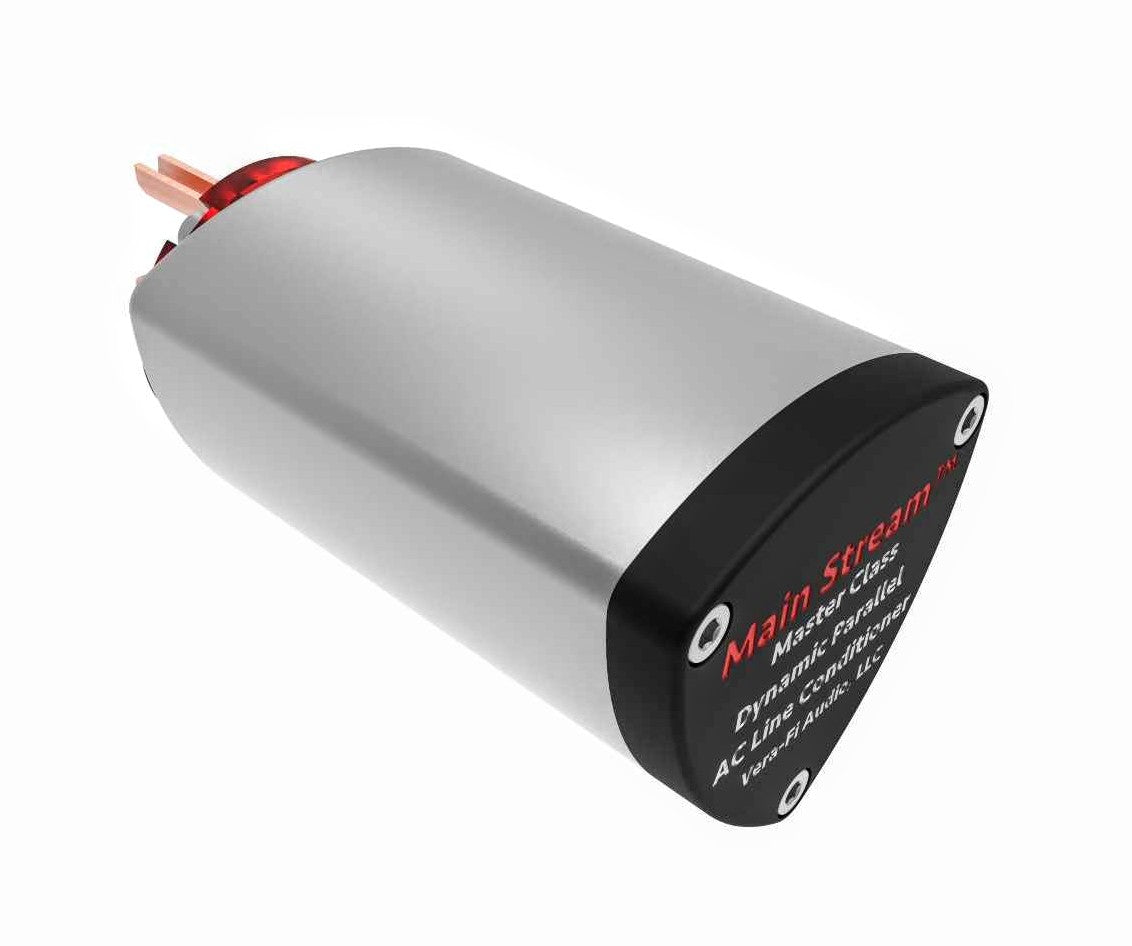
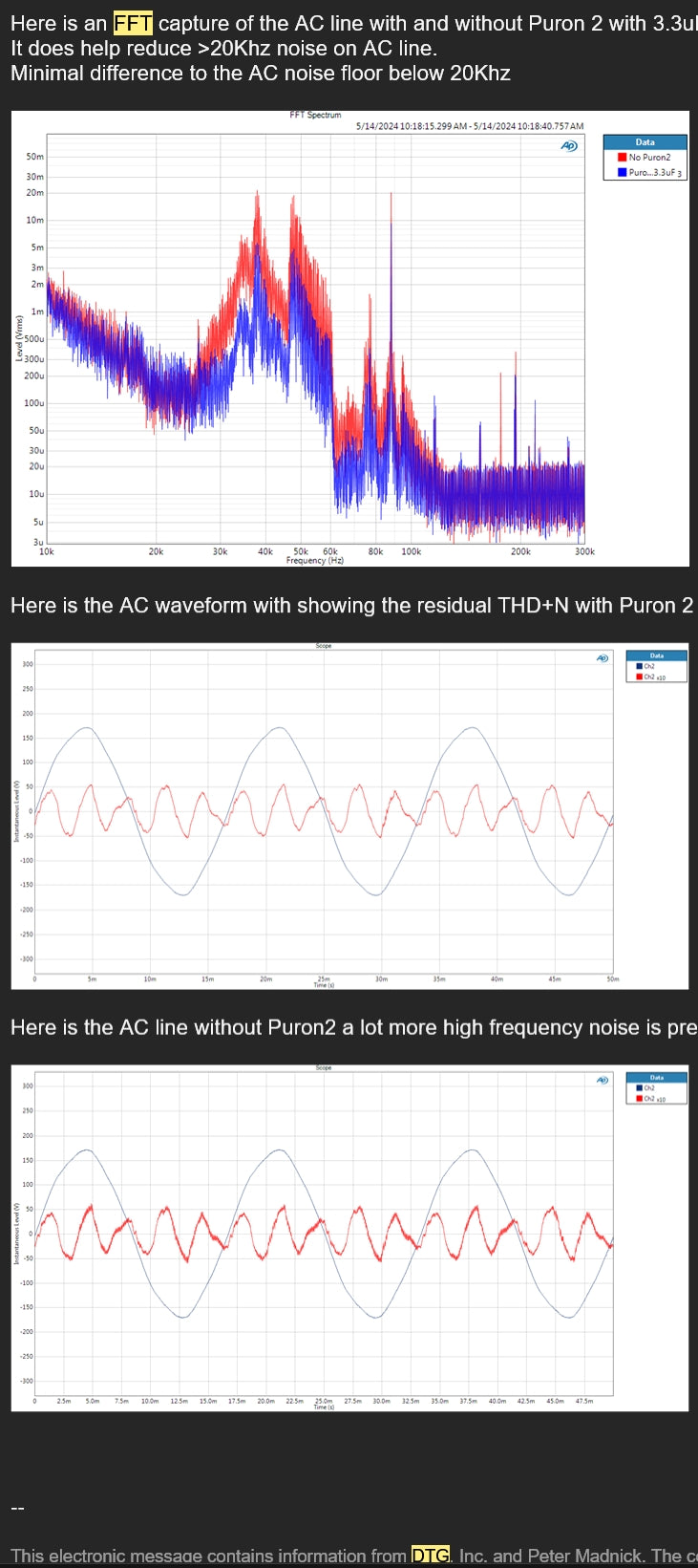
I purchased the duo and initially had to wait around three weeks for delivery due to component supply issues in their warehouse
Notwithstanding, Mark went out of his way to keep me informed of progress all the way until they arrived on my door step in Adelaide Australia
I plugged the Snubway into the wall socket and the Mainstream into the first socket on my power board - both have been working for just over a week now but I have not yet finished installing my hi-fi system so can’t comment at this stage regarding that However, my flat screen TV is on that board and I have noticed a significant improvement in the sound quality now that the units have had a chance to “burn in”
Once I’ve finished the hi-fi installation I will report again on how it goes
In the meantime I really must commend Mark for his top line service and attention to my needs
The many 5 star reviews are well deserved given my experience so far
There are two dedicated lines supplying power to my stereo. Each line has a Core Technologies power conditioner. I added a Main Stream to one line and a Snubway to the other. After two weeks of burn -in I can say with confidence that the results are positive and pronounced. There is more space around instruments and voices. The sound stage is deeper and wider. Most importantly to me is the entire presentation is more clear and focused. Best $600 I've spent on this rig!
Improvements were immediately noticeable. I haven't paid enough attention to whether they improved further in time.
What the mainstream did: a feeling of more power behind everything, especially noticeable in the bass and impact of drums. It feels correct and better, not just different, and the improvement is pretty significant.
What the snubway did: a more subtle improvement. First thing I noticed is a more accurate location of sounds. In general there's more subtle detail.
For context, I do have a computer with a switching power supply on the same group that I use to play music. Other than that it's only audio devices with lineair power supplies. I use the snubway to protect those, and use the mainstream for everthing. I did a few tests with positioning and this seems to work best. Mainstream: directly in a wall socket. Snubway: in the power distributor for audio devices.
I’ve had unit installed about 4 weeks now and really happy.
They are as effective in lowering noise and revealing detail as the many I have tried in the past. However, they are making a little additional magic that no other plug-ins could provide. Music flows with ease and smoothness, but it is more than that. The PRaT was at its best playing from all my sources, and the music became more engaging. I also noticed the soundstage and instrument separation turned better and became more believable.
Didn't think the Main Stream would make a positive difference since I live in the boonies, with no neighbors. My home has a dedicated transformer on the utility pole. I was wrong. The Main Stream improved detail and the instruments have more color. Thankfully it doesn't decrease dynamics. Highly recommended.
The delivery was done a long time ago, but due to the internet line at home being down, I was only able to set it up and test it today. It’s truly impressive. It feels like the sound has come alive. I can’t believe how much of a difference this one thing can make.
Back in my audio years (70's 80's and 90's) no one talked about AC line filtering. We sold a "power conditioner" from Monster Cable but all it really did was compress the music! I don't think anyone really knew anything about what was on the AC line and how it affected a system's sound quality. But back then, customers balked when we suggested that they upgrade to a 12 gauge power cord for an extra $45!
I have auditioned a few of your competitor's products and while they did "something" none of them made as big a difference as your two filters. You have every right to be proud of your products as they really make a significant difference. I wish you every success in marketing your filters in a field that is crowded with voodoo clones some of which selling at stupidly high prices!
Using it in 2 systems, paired with the Snubway. In both systems, a 2.1 and an 11.2 Home Theatre, I’m getting more dynamic music and soundtracks, with dead silent backgrounds. Brighter, cleaner, and immensely enjoyable.
I used this in conjunction with the snub way noise defender. Bass is fuller, treble is sweeter and instrument separation is enhanced. Overall a noticeable improvement in all aspects of sound quality. My system is: Zu Audio DW6 superfly speakers, HiFi Rose RA 280 amp, Denon DCD1700 ne CD player, Eversolo DMP A6 streamer, Schitt Jotunheim II headphone amp and Audio Technica ath WP-900 headphones. Cables/interconnects are Zu Audio Mission II's.
Main Stream Reviews on YouTube

Audio Pursuit
Audio Pursuit gives Main Stream the Tesla award alongside SnubWay

TONE Audio
Vera-Fi Main Stream Quick Overview

Audio Pursuit
Budget-Friendly Power Conditioners: Snubway & Main Stream
Articles about Main Stream

Positive Feedback
Tom Gibbs awards Main Stream and SnubWay for 2024 Writers' Choice Award

Headphone Guru
Main Stream wins 2024 Accessory of the Year awarded by Headphone Guru
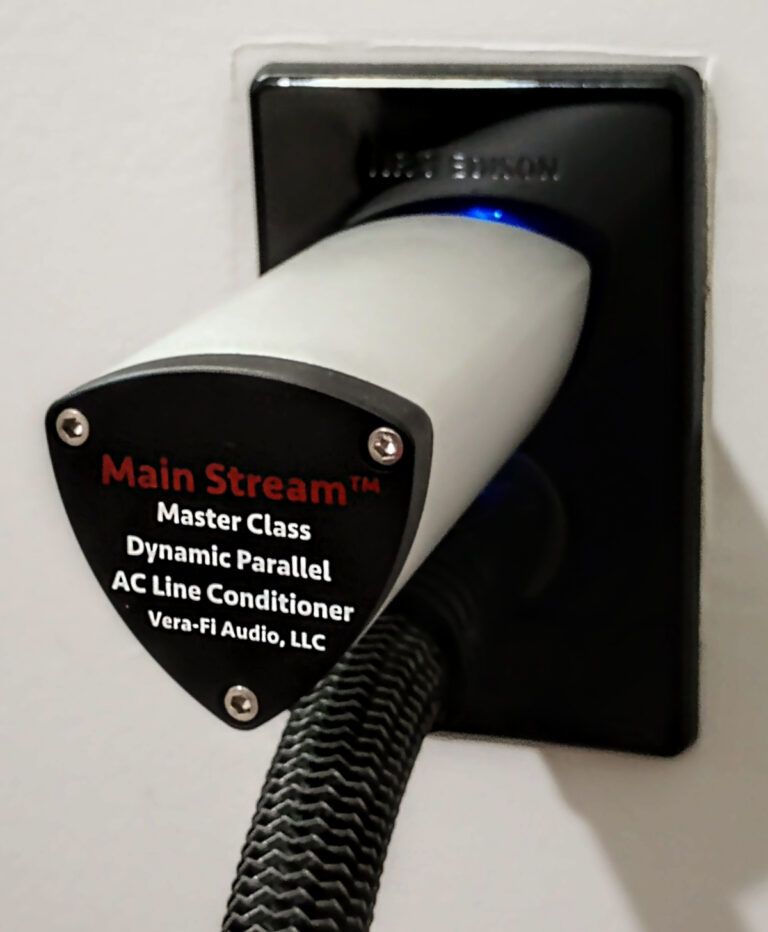
Positive Feedback
Main Stream provide the kind of overall improvements you'd expect to pay through the nose for.
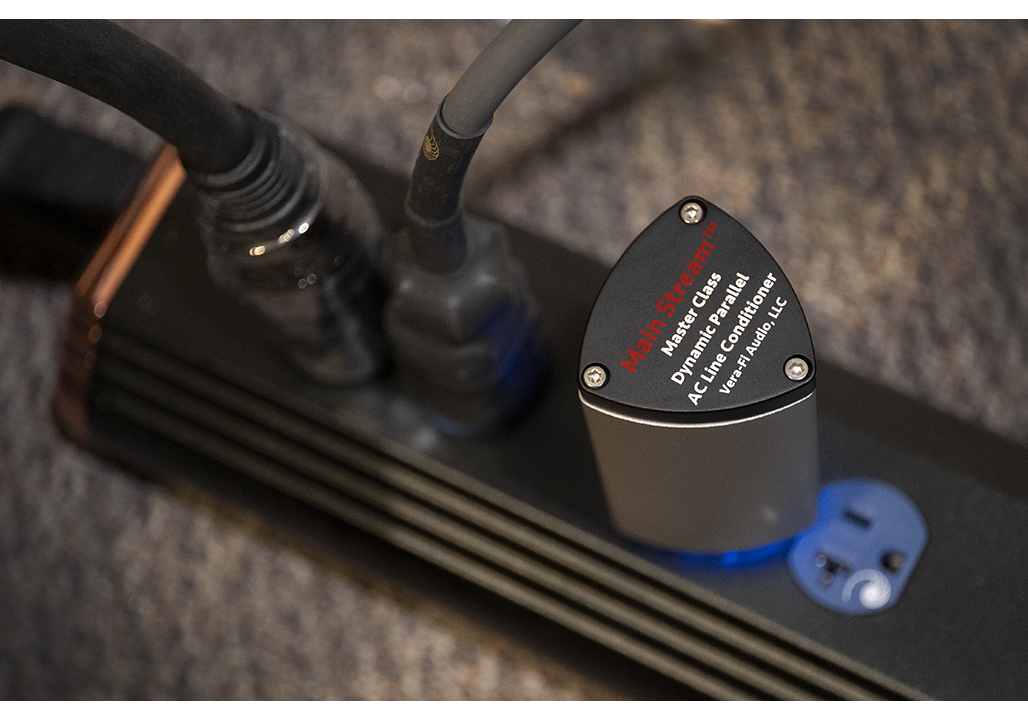
Tone Publications
The Main Stream will make a similar contribution to your system just like fine-tuning your speakers for optimum placement and turntable setup.
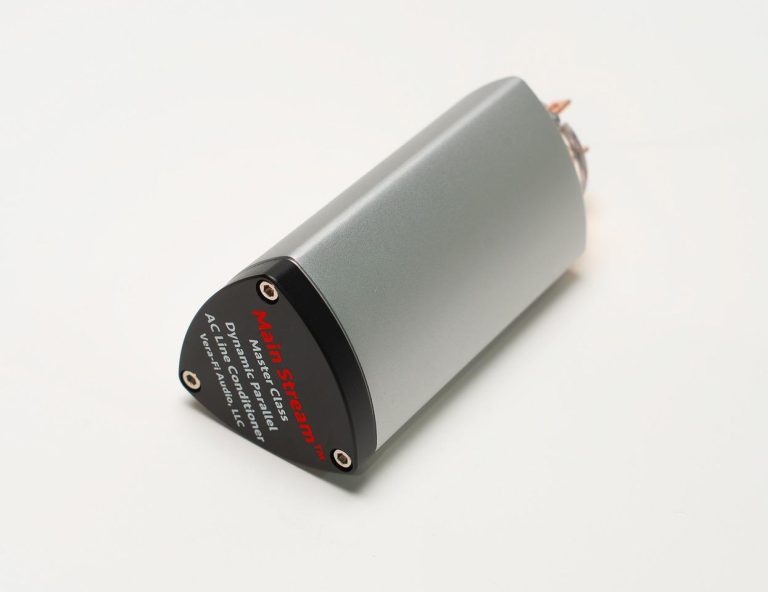
Stereo Times
The Main Stream brought me ever closer to the music while providing a more nuanced performance.
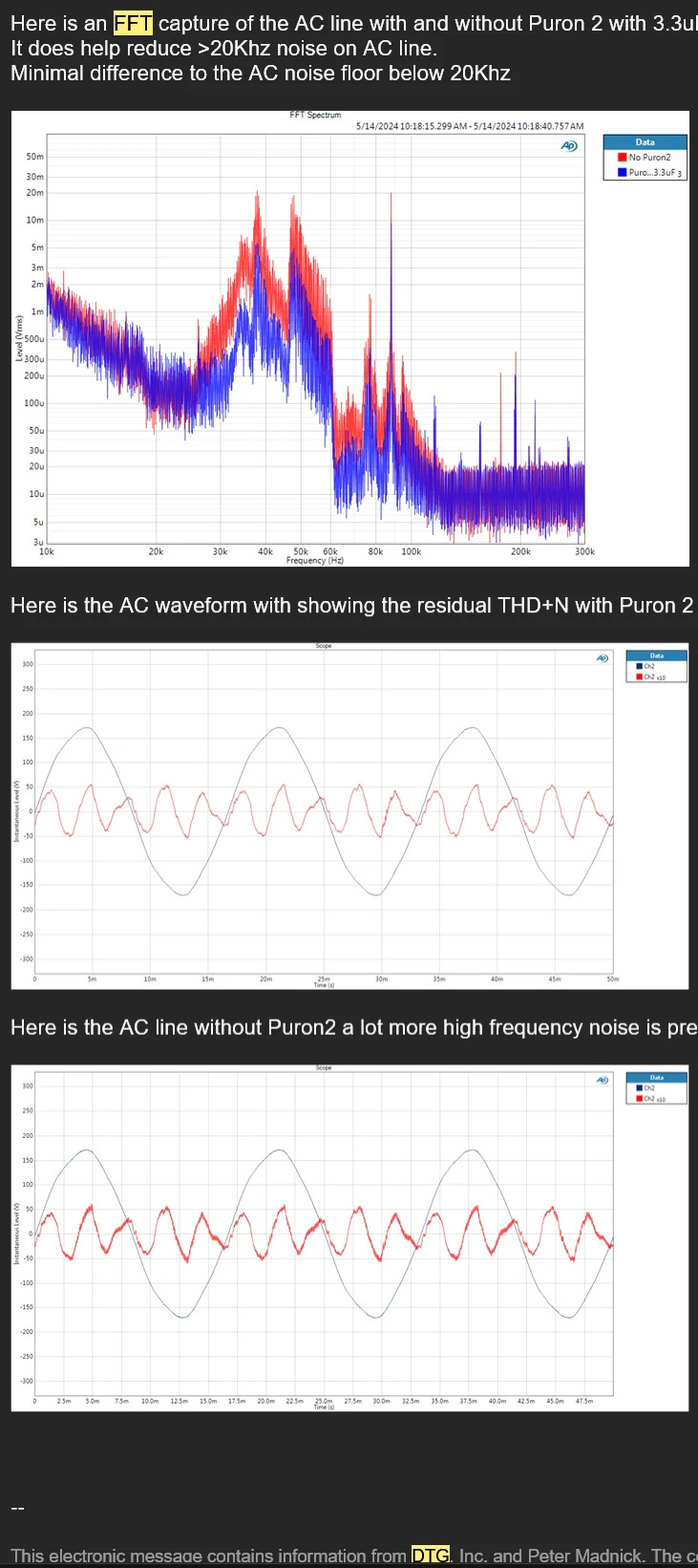
Headphone Guru
The Main Stream is an incredible value and an extremely simple way to improve your audio system without introducing any negative effects.
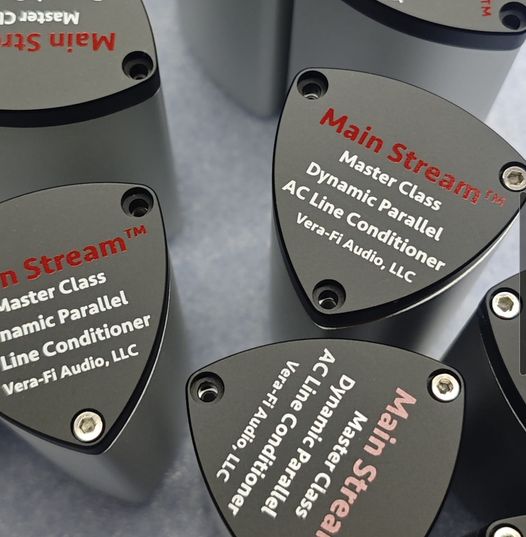
Audiogon Forums
I can’t think of any other product that improves recorded music as dramatically as Main Stream.

Positive Feedback
Main Stream has worked wonders in my all-analog system.
Frequently Asked Questions (FAQs)
What does the Main Stream Master Class Dynamic Parallel AC Line Conditioner do?
The Main Stream reduces a broad spectrum of AC noise, allowing your system to achieve ultimate performance.
How is the Main Stream different from other power conditioners?
The Main Stream is a plug-in filter that increases the blackness of one's audio system, enhancing sound quality without introducing any negative effects. It concentrates its effects mostly between 10kHz and 20kHz where problems with AC Mains tend to show themselves.
Is the Main Stream easy to install?
Yes, simply plug the Main Stream into an outlet on the same circuit as your audio equipment. Main Stream is fine in Power Conditioners as well. Main Stream is also a parallel type filter so can be plugged into any available free power socket in your system.
Can I use the Main Stream with other power conditioning devices?
Yes, it can be used alongside other power conditioning devices like SnubWay or other products like Puron etc.
What kind of improvements can I expect in my audio system?
Experts and users have reported a darker background, revealing more detail and ambient cues, expanded soundstage, and tighter, deeper bass.
Where can I find Vera-Fi Audio warranty information?
You may find information about warranty here.
Follow Us!
Subscribe to our mailing list for insider news, product launches, and more.
- Choosing a selection results in a full page refresh.
- Opens in a new window.
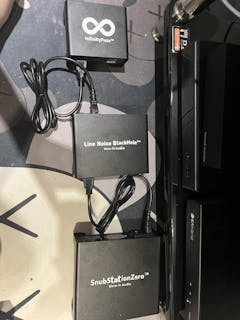
When I added the LNBH and SSZ to my system, I installed them together, so it’s impossible for me to separate their individual contributions. After a long run-in period, the changes became so compelling that I found myself staying up late, revisiting every song I’ve ever loved.
One of the most striking improvements was the disappearance of noise-related limitations. With these two in place, details that were previously buried in the mix became clearly audible. I could hear the subtle sounds of a vocalist taking a breath or even swallowing, which added an incredible sense of realism to the performance.
The overall imaging feels more precise, with every element in the soundstage locked in place. Music flows effortlessly, and the presentation is so engaging that it’s hard to step away from the listening chair. This pairing improved the technical side of my system while also bringing a level of musical connection that keeps me listening for hours.
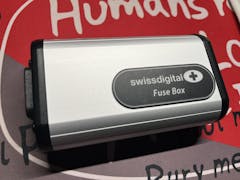
I recently replaced the stock fuses in both my SSZ and Tempus PSU with the Graphene Sluggo.
Even at the start there was a sense that something had shifted, but this is not the kind of upgrade that shows everything in the first hour. In my case it really came into its own after about 300 hours. The first 50 hours the treble had a slightly tighter character and the mid-bass felt restrained. Around 150 hours the presentation started to relax, with better flow and more natural layering. By 300 hours dynamics felt settled, micro-details became more apparent, and the whole system sounded more connected.
What stood out most to me was the neutrality and transparency. It does not push the tonal balance in any direction, it simply lets the system speak for itself. Highs extend cleanly without harshness, keeping fine texture and air. The midrange has a natural presence with good retrieval of subtle detail. Bass is well controlled, evenly weighted, and separated with clarity.
On the SSZ, highs became smoother while keeping resolution, and the soundstage felt more open in both width and depth. Vocals gained more dimensionality compared to the stock fuse. On the Tempus PSU, tonal balance stayed consistent, but resolution improved across the range, making instrument separation easier to follow.
Mark at Vera-Fi has been great to talk to. Every question I asked was answered with detail and warmth, which made the whole experience more positive.
After this I plan to gradually replace all the fuses in my system with the Graphene Sluggo. For anyone using SSZ or Tempus PSU who wants more resolution and detail without altering the system character, this could be worth considering.
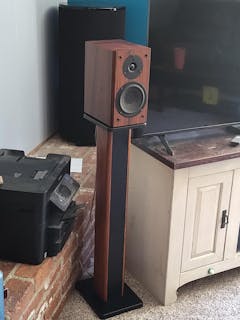
Purchased a pair of Vera-Fi Audio Vanguard Scout bookshelf speakers to replace my Fluance XL8S bookshelf speakers in the living room 2.1 system and am glad I did. In Stick Season by Noah Kahan Noah's voice has a low-level echo seemingly caused by the recording space, and it was hard to resolve in my Fluance XL8S based 2.1 system. Now, with the Vanguard Scout based 2.1 system, that low-level echo is better resolved at the same, low volume level (67dB or so on average at the listening position, C-weighted). There is that and there's the fact they're gorgeous looking speakers in the room. Very happy with this purchase.
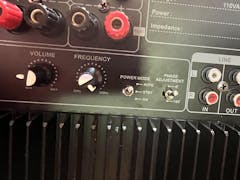
This sub is a great value. I can’t think of any other sub in its price range that can compare.
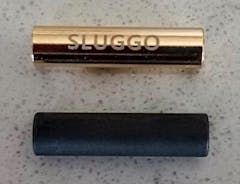
I've had experiences with three different sluggo options, the high purity copper version, high purity copper with a gold immersion, and the graphene sluggo. The graphene sluggo was far and away my no. 1 choice; graphene is the best conductor of electricity that exists, and the graphene sluggo has been vapor-deposited with a microscopic layer of the compound. Graphene is actually just a single molecule of carbon, and though the microscopic layer deposited on the sluggo is infinitely thin, it still transmits current at a 70% higher rate than either of the two other options. The sluggo uses the proven concept of "skin effect," where the lion's share of the current travels across the surface of the sluggo. The graphene sluggo was absolutely superior to anything else I had access to, you can read my original review here:
https://positive-feedback.com/reviews/hardware-reviews/vera-fi-audio-swiss-digital-fuse-box/?highlight=graphene
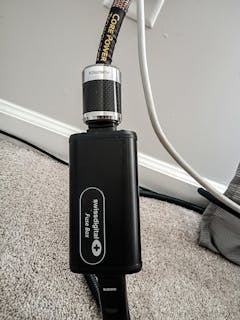
The Naiu Ella Stereo Amplifier is the only amp in my collection of gear that has an amperage rating higher than 10 amps -- that wouldn't allow me use the more flexible Infinity Fuse unit that's user-programmable. The Swiss Digital Fuse Box arrived in a black case as opposed to the usual silver case, which was a really good look! Hookup was easy, and I robbed the Core Power Piggy Tail from my analog system to hook the Naiu Ella to the SDFB. After it burned in for 24-or-so hours, I took an extended listen, and the SDFB in the system with the Ella amp now showed the same level of effortlessness and clarity I noted in my original experiences with it in my all-analog system. And my principal assessment of the SDFB remains consistent -- the Naiu Ella in the digital source system now plays with more control and limitless dynamics -- it's almost like a completely different, more powerful amplifier. Very highly recommended -- once you hear your system with the SDFB, there's no going back!
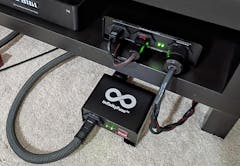
A more cost-effective, user-programmable alternative to the Swiss Digital Fuse Box! And the dip switches allow the user to customize it for amperage and fuse type (slo-blow or fast acting) for compatibility with a variety of devices. You're not limited to a single device (as with the SDFB, which arrives pre-programmed for a specific fuse type and amperage rating), and that frees you to experiment with other equipment, easily helping you decide if you need additional Infinity Fuse units. The only thing necessary for you to do prior to placing your order is to confirm the fuse dimensions and choose the Sluggo (that replaces the fuse) or an upgraded version. And the Infinity Fuse will work with any device with a fuse rating up to 10 amps. Highly recommended -- I've tried it with tube amplifers, DACs, and preamplifiers, and the IF really gets you closer to the music!
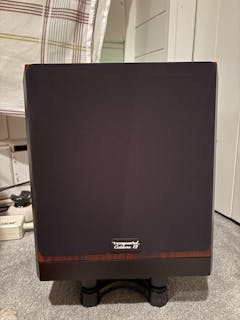
There are a couple of qualities of these subwoofers that I would like to comment on favorably. First, the coverage of the midbass frequencies, and in fact the musicality of the subwoofers, is remarkable for the price. In my room, the frequencies between 65 and 125 are suppressed by the room. The Caldara subwoofers compensate for this very nicely. Second, the visual appearance of the units is very nice.
Wow, I miss the ultra low frequencies that my old but no longer functional REL subwoofers provided, my music room does not really allow for reproduction of the frequencies between 20 and 40 Hz. The trade-off of musicality is therefore significant compensation.
I appreciated Mark’s generous offer to substitute the Caldera for the smaller model which was out of stock. If I can make one suggestion for future Caldera models, it would be to have speaker level inputs in addition to the RCA inputs.

Wow - I honestly wasn't sure if I was even a "bass guy" before purchasing 2x Caldera 12"s, and my Wharfedale Linton's even had already solid bass response, but in the endless quest for the "wow" factor, I was pointed towards Vera-Fi's subwoofer offerings.
Let me just say, I am absolutely blown away. I can't stop listening to my system -- it just sounds too good. I also have not experienced such remarkably good customer service from a company in quite some time. Thank you to Mark and the team for making such a reasonably priced product that punches far into much higher price points.
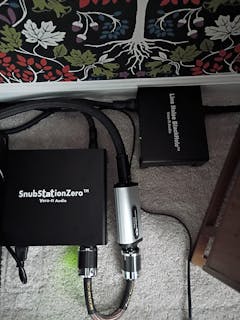
The Line Noise BlackHole (LNBH) sets the new industry standard for AC line noise elimination. In both my systems, the LNBH in combination with the Snub Station Zero easily bested the AudioQuest Niagara equipment that occupied both systems. If you can manage with a combined amperage total of less than 10 amps (that's much easier than most might imagine), these devices will shock you with the goodness they bring to your listening sessions. Yes, they eliminate AC-borne line noise, but the opens an entirely new listening experience, with incredible transparency and clarity, whether you listen to analog or digital sources. Very highly recommended, and maybe the most important product launch from Vera-Fi Audio yet!

